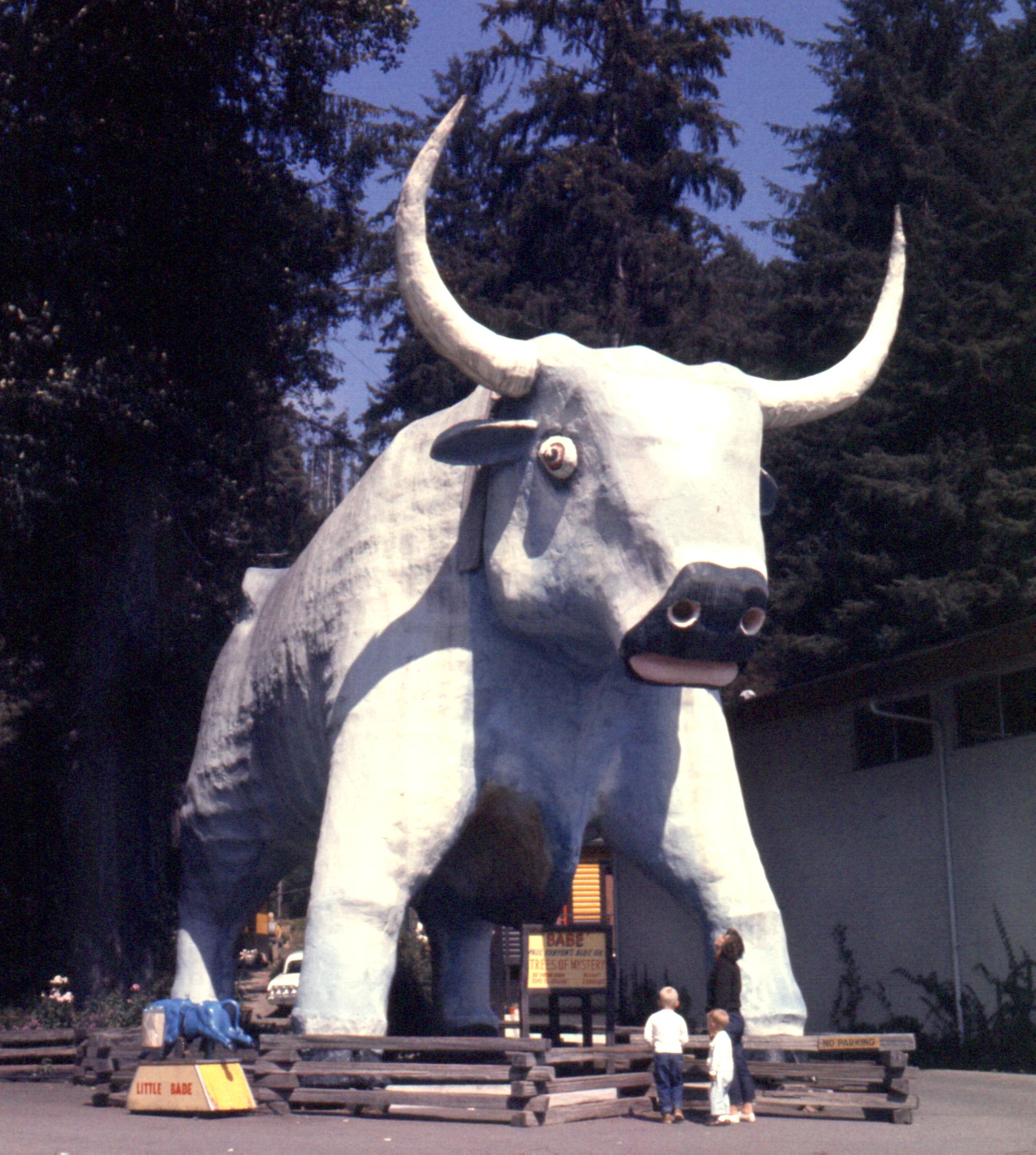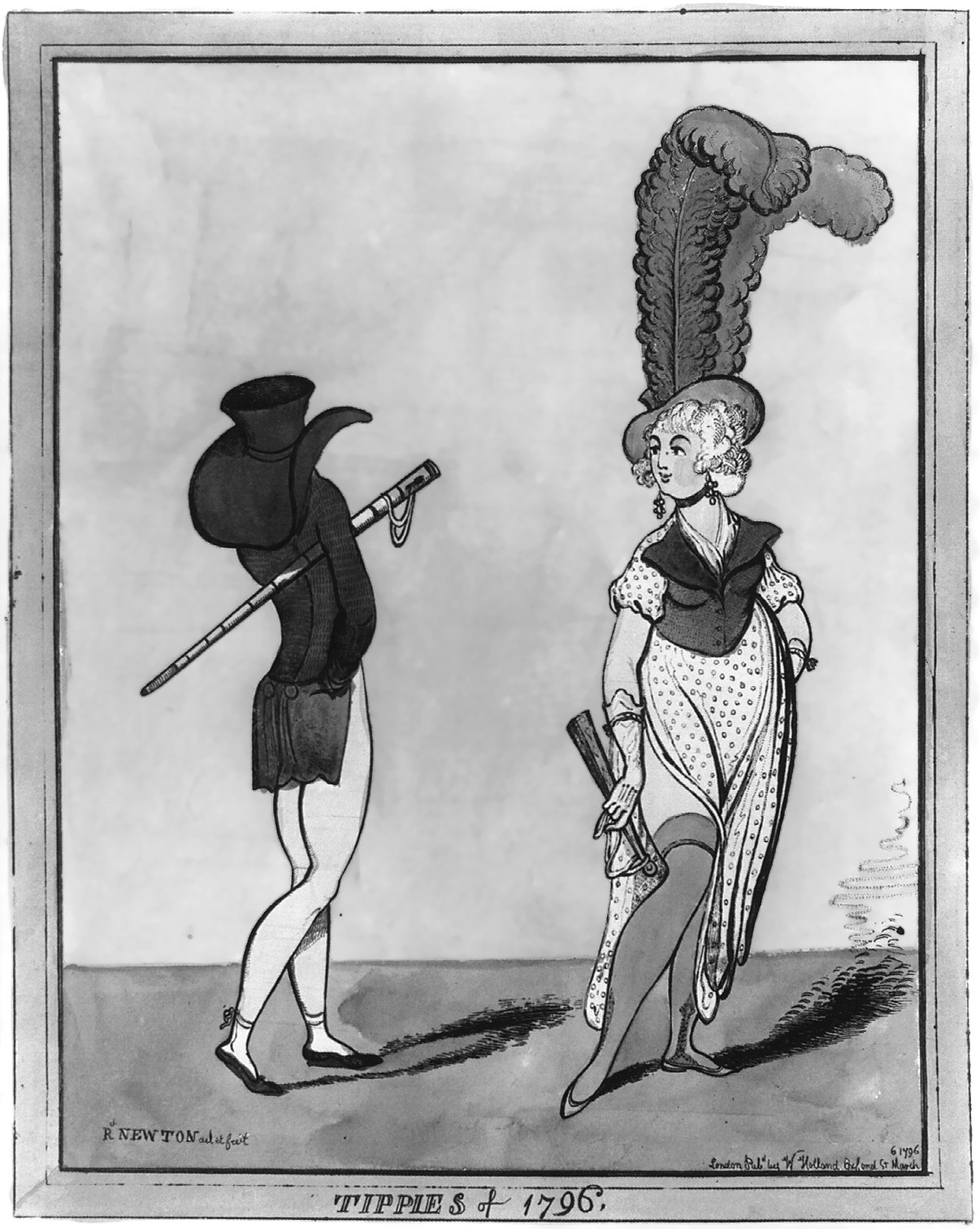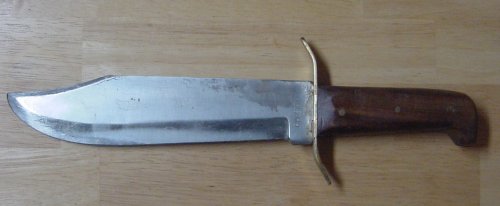|
Tall Tale
A tall tale is a story with unbelievable elements, related as if it were true and factual. Some tall tales are exaggerations of actual events, for example fish stories ("the fish that got away") such as, "That fish was so big, why I tell ya', it nearly sank the boat when I pulled it in!" Other tall tales are completely fictional tales set in a familiar setting, such as the European countryside, the American frontier, the Canadian Northwest, the Australian frontier, or the beginning of the Industrial Revolution. Events are often told in a way that makes the narrator seem to have been a part of the story; the tone is generally good-natured. Legends are differentiated from tall tales primarily by age; many legends exaggerate the exploits of their heroes, but in tall tales the exaggeration looms large, to the extent of dominating the story. United States The tall tale is a fundamental element of American folk literature. The tall tale's origins are seen in the bragging contests th ... [...More Info...] [...Related Items...] OR: [Wikipedia] [Google] [Baidu] |
Exaggeration
Exaggeration is the representation of something as more extreme or dramatic than it really is. Exaggeration may occur intentionally or unintentionally. Exaggeration can be a rhetorical device or figure of speech. It may be used to evoke strong feelings or to create a strong impression. Amplifying achievements, obstacles and problems to seek attention is an everyday occurrence Inflating the difficulty of achieving a goal after attaining it, can be used to bolster self-esteem. In the arts, exaggerations are used to create emphasis or effect. As a literary device, exaggerations is often used in poetry, and is frequently encountered in casual speech. Many times the usages of hyperbole describes something as better or worse than it really is. An example of hyperbole is: "The bag weighed a ton." Hyperbole makes the point that the bag was very heavy, though it probably does not weigh a ton. Exaggerating is also a type of deception,Guerrero, L., Anderson, P., Afifi, W. (2007). Cl ... [...More Info...] [...Related Items...] OR: [Wikipedia] [Google] [Baidu] |
James Bowie
James Bowie ( ) ( – March 6, 1836) was a 19th-century American pioneer, slave smuggler and trader, and soldier who played a prominent role in the Texas Revolution. He was among the Americans who died at the Battle of the Alamo. Stories of him as a fighter and frontiersman, both real and fictitious, have made him a legendary figure in Texas history and a folk hero of American culture. Bowie was born in Kentucky. He spent most of his life in Louisiana, where he was raised and where he later worked as a land speculator. His rise to fame began in 1827 on reports of the Sandbar Fight near present-day Vidalia, Louisiana. What began as a duel between two other men deteriorated into a mêlée in which Bowie, having been shot and stabbed, killed the sheriff of Rapides Parish with a large knife. This, and other stories of Bowie's prowess with a knife, led to the widespread popularity of the Bowie knife. Bowie enlarged his reputation during the Texas Revolution. After moving to Te ... [...More Info...] [...Related Items...] OR: [Wikipedia] [Google] [Baidu] |
Ohio River
The Ohio River is a long river in the United States. It is located at the boundary of the Midwestern and Southern United States, flowing southwesterly from western Pennsylvania to its mouth on the Mississippi River at the southern tip of Illinois. It is the third largest river by discharge volume in the United States and the largest tributary by volume of the north-south flowing Mississippi River that divides the eastern from western United States. It is also the 6th oldest river on the North American continent. The river flows through or along the border of six states, and its drainage basin includes parts of 14 states. Through its largest tributary, the Tennessee River, the basin includes several states of the southeastern U.S. It is the source of drinking water for five million people. The lower Ohio River just below Louisville is obstructed by rapids known as the Falls of the Ohio where the elevation falls in restricting larger commercial navigation, although i ... [...More Info...] [...Related Items...] OR: [Wikipedia] [Google] [Baidu] |
Mike Fink
Mike Fink (also spelled Miche Phinck)O'Neil, Paul. ''The Old West: The Rivermen''. Time-Life Books, New York. 1975 p. 71 (c. 1770/1780 – c. 1823), called "king of the keelboaters", was a semi-legendary brawler and river boatman who exemplified the tough and hard-drinking men who ran keelboats up and down the Ohio and Mississippi Rivers. Historical figure Mike Fink was born at Fort Pitt in present-day Pittsburgh, Pennsylvania, and served as an Indian scout in his teenage years. Even as a teenager, he was an unbeatable marksman, and he earned the name "Bangall" among militiamen at Fort Pitt. When the Indian wars of the region ended, in the mid 1790s, Fink, like many other scouts, spurned a sedentary life as a farmer. Instead, he drifted into the transport business on the Ohio and Mississippiand quickly picked up a new nickname: "the snapping turtle". When he began his career in navigation, he became notorious, both for his practical jokes, and for his willingness to figh ... [...More Info...] [...Related Items...] OR: [Wikipedia] [Google] [Baidu] |
Davy Crockett
David Crockett (August 17, 1786 – March 6, 1836) was an American folk hero, frontiersman, soldier, and politician. He is often referred to in popular culture as the "King of the Wild Frontier". He represented Tennessee in the U.S. House of Representatives and served in the Texas Revolution. Crockett grew up in East Tennessee, where he gained a reputation for hunting and storytelling. He was made a colonel in the militia of Lawrence County, Tennessee and was elected to the Tennessee state legislature in 1821. In 1827, he was elected to the U.S. Congress where he vehemently opposed many of the policies of President Andrew Jackson, especially the Indian Removal Act. Crockett's opposition to Jackson's policies led to his defeat in the 1831 elections. He was re-elected in 1833, then narrowly lost in 1835, prompting his angry departure to Texas (then the Mexican state of Tejas) shortly thereafter. In early 1836, he took part in the Texas Revolution and died at the Battle of ... [...More Info...] [...Related Items...] OR: [Wikipedia] [Google] [Baidu] |
Texas State Historical Association
The Texas State Historical Association (TSHA) is a non-profit educational organization, dedicated to documenting the history of Texas. It was founded in Austin, Texas, on March 2, 1897. , TSHA moved their offices from Austin to the University of North Texas in Denton. In 2015, the offices were relocated again, to the University of Texas at Austin. Overview The chief executive officer is Jesús F. de la Teja and the chief historian is Walter L. Buenger. The association president (2018-2019) is Sarita Hixon; the preceding president is (2017-2018) Paula Mitchell Marks. Other past presidents include Steve Cook (2016-2017), Lynn Denton (2015-2016), John L. Nau III (2014-2015), Gregg Cantrell (2013-2014), Watson Arnold (2012-2013), Merline Pitre (2011-2012), Dianne Garrett Powell (2010–2011) and Walter L. Buenger (2009-2010). Other past presidents are the late Robert A. Calvert (1989–1990) of Texas A&M, Alwyn Barr (1992-1993) of Texas Tech University, and Jerry D. Thompson (2001 ... [...More Info...] [...Related Items...] OR: [Wikipedia] [Google] [Baidu] |
Handbook Of Texas Online
The ''Handbook of Texas'' is a comprehensive encyclopedia of Texas geography, history, and historical persons published by the Texas State Historical Association (TSHA). History The original ''Handbook'' was the brainchild of TSHA President Walter Prescott Webb of The University of Texas history department. It was published as a two-volume set in 1952, with a supplemental volume published in 1976. In 1996, the New Handbook of Texas was published, expanding the encyclopedia to six volumes and over 23,000 articles. In 1999, the Handbook of Texas Online went live with the complete text of the print edition, all corrections incorporated into the handbook's second printing, and about 400 articles not included in the print edition due to space limitations. The handbook continues to be updated online, and contains over 25,000 articles. The online version includes entries on general topics, such as "Texas Since World War II", biographies such as notable Texans Samuel Houston and W. ... [...More Info...] [...Related Items...] OR: [Wikipedia] [Google] [Baidu] |
History Of Texas
The recorded history of Texas begins with the arrival of the first Spanish conquistadors in the region of North America now known as Texas in 1519, who found the region occupied by numerous Native American tribes. The name ''Texas'' derives from ''táyshaʼ'', a word in the Caddoan language of the Hasinai, which means "friends" or "allies." Native Americans' ancestors had been in what is now Texas, more than 10,000 years ago as evidenced by the discovery of the remains of prehistoric Leanderthal Lady. During the period of recorded history from 1519 AD to 1848, all or parts of Texas were claimed by five countries: France, Spain, Mexico, the Republic of Texas, and the United States of America, as well as the Confederacy during the Civil War. The first European base was established in 1680, along the upper Rio Grande river, near modern El Paso, with the exiled Spaniards and Native Americans from the Isleta Pueblo during the Pueblo Revolt, also known as Popé's Rebellion, fro ... [...More Info...] [...Related Items...] OR: [Wikipedia] [Google] [Baidu] |
Native Americans In The United States
Native Americans, also known as American Indians, First Americans, Indigenous Americans, and other terms, are the Indigenous peoples of the mainland United States ( Indigenous peoples of Hawaii, Alaska and territories of the United States are generally known by other terms). There are 574 federally recognized tribes living within the US, about half of which are associated with Indian reservations. As defined by the United States Census, "Native Americans" are Indigenous tribes that are originally from the contiguous United States, along with Alaska Natives. Indigenous peoples of the United States who are not listed as American Indian or Alaska Native include Native Hawaiians, Samoan Americans, and the Chamorro people. The US Census groups these peoples as " Native Hawaiian and other Pacific Islanders". European colonization of the Americas, which began in 1492, resulted in a precipitous decline in Native American population because of new diseases, wars, ethnic ... [...More Info...] [...Related Items...] OR: [Wikipedia] [Google] [Baidu] |
Appalachian Mountains
The Appalachian Mountains, often called the Appalachians, (french: Appalaches), are a system of mountains in eastern to northeastern North America. The Appalachians first formed roughly 480 million years ago during the Ordovician Period. They once reached elevations similar to those of the Alps and the Rocky Mountains before experiencing natural erosion. The Appalachian chain is a barrier to east–west travel, as it forms a series of alternating ridgelines and valleys oriented in opposition to most highways and railroads running east–west. Definitions vary on the precise boundaries of the Appalachians. The United States Geological Survey (USGS) defines the ''Appalachian Highlands'' physiographic division as consisting of 13 provinces: the Atlantic Coast Uplands, Eastern Newfoundland Atlantic, Maritime Acadian Highlands, Maritime Plain, Notre Dame and Mégantic Mountains, Western Newfoundland Mountains, Piedmont, Blue Ridge, Valley and Ridge, St. Lawrence Valle ... [...More Info...] [...Related Items...] OR: [Wikipedia] [Google] [Baidu] |
Cumberland Gap
The Cumberland Gap is a pass through the long ridge of the Cumberland Mountains, within the Appalachian Mountains, near the junction of the U.S. states of Kentucky, Virginia, and Tennessee. It is famous in American colonial history for its role as a key passageway through the lower central Appalachians. Long used by Native American nations, the Cumberland Gap was brought to the attention of settlers in 1750 by Thomas Walker, a Virginia physician and explorer. The path was used by a team of frontiersmen led by Daniel Boone, making it accessible to pioneers who used it to journey into the western frontiers of Kentucky and Tennessee. It was an important part of the Wilderness Road and is now part of the Cumberland Gap National Historical Park. Geography The Cumberland Gap is one of many passes in the Appalachian Mountains, but the only one in the continuous Cumberland Mountain ridgeline. It lies within Cumberland Gap National Historical Park and is located on the border ... [...More Info...] [...Related Items...] OR: [Wikipedia] [Google] [Baidu] |
Daniel Boone
Daniel Boone (September 26, 1820) was an American pioneer and frontiersman whose exploits made him one of the first folk heroes of the United States. He became famous for his exploration and settlement of Kentucky, which was then beyond the western borders of the Thirteen Colonies. In 1775, Boone blazed the Wilderness Road through the Cumberland Gap and into Kentucky, in the face of resistance from American Indians, for whom Kentucky was a traditional hunting ground. He founded Boonesborough, one of the first English-speaking settlements west of the Appalachian Mountains. By the end of the 18th century, more than 200,000 people had entered Kentucky by following the route marked by Boone. Boone served as a militia officer during the Revolutionary War (1775–1783), which was fought in Kentucky primarily between American settlers and British-allied Indians. Boone was taken in by Shawnees in 1778 and adopted into the tribe, but he resigned and continued to help protect the Ke ... [...More Info...] [...Related Items...] OR: [Wikipedia] [Google] [Baidu] |










